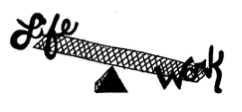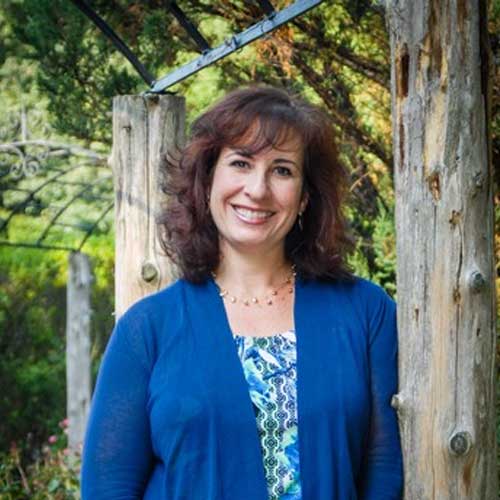B is for BALANCE
The Coach’s Alphabet: B is for BALANCE
by: Stacey Zackin, PhD, MSW, PCC
aka: theCoach4you ~ Coach/Speaker/Educator
Coaching—in sports, business, and life—is about identifying goals, developing potential, overcoming obstacles, improving performance, and achieving outcomes. In sports, the goals tend to be clear: increase speed, endurance, coordination, and accuracy. Similarly, in business, success is often clearly defined by tangible indicators such as completing tasks within a certain time frame and under a certain budget or delivering a specific service in accordance with established guidelines. When it comes to life—not only can our goals seem ambiguous and the measure by which we judge our success indeterminate, our desires are often at cross-purposes.
When our interests and aspirations compete for our attention we find ourselves longing for that elusive touchstone called BALANCE where we can equally attend:
• Career and Family
• Ambition and Integrity
• Control and Compromise
• Security and Independence
• Creative Passion and Financial Success
• Need for Stability and Cravings for Adventure
Many approach LIFE BALANCE as if it were a destination, a fixed place of equilibrium where “having it all” and “doing everything” reside, but that place does not exist…at least not how it is normally perceived.
 It does not serve us to imagine fulfillment and satisfaction as objects sitting still on a balance beam waiting for us to move towards them in small tentative steps to avoid a sudden disruption to the status quo. A more productive representation of the dynamic and fluid energy of BALANCE is that of a seasaw that moves in a constant yet inconsistent rhythm— simultaneously traveling in multiple directions. The goal is not to stabilize the board from the center, but to gently swing between the extremes without losing control or falling off.
It does not serve us to imagine fulfillment and satisfaction as objects sitting still on a balance beam waiting for us to move towards them in small tentative steps to avoid a sudden disruption to the status quo. A more productive representation of the dynamic and fluid energy of BALANCE is that of a seasaw that moves in a constant yet inconsistent rhythm— simultaneously traveling in multiple directions. The goal is not to stabilize the board from the center, but to gently swing between the extremes without losing control or falling off.
BALANCE is about living life in proportion. Our challenge is to establish a healthy relationship between the different aspects of our life including career, finances, environment, family, friends, romance, creative expression, intellectual stimulation, emotional well-being, spiritual connection, and achieving a sense of purpose and contribution. It can be dizzying if not debilitating to try to do it all.
BALANCE is about being at choice* with which aspects take precedent at any given moment. When you or a family member are sick, your perspective on what is of primary importance drastically shifts. When you have an important deadline at school or work, you need to focus your energy on that project at the expense of other goals. BALANCE is not about avoiding these opposing poles—it is about navigating the tension between life’s ups and downs. (*Choice will be the topic of my next column.)
Balance is about navigating the tension between life’s ups and downs.
In his book Flow, positivist psychologist Mihaly Csikszentmihalyi, talks about the psychological state that exists between being overwhelmed and being bored. In this state of flow, (aka: “the zone”), we experience full immersion and engagement in the present moment. Sometimes that moment takes place when a person is running across a finish line, receiving applause after a presentation or performance, or walking hand-in-hand with a loved one. It is antithetical to think that such moments when our attention is focused on only one thing are when we feel most balanced, and yet, it is the lack of these moments (of that sense of flow) that let us know we are out of BALANCE.
As Daniel Goleman, a psychologist specializing in the fields of emotional intelligence and leadership, writes about in his book Focus, the speed and expectations of modern day are so daunting they distract us from entering the flow. So. . . if you think that the way to find BALANCE is to divide your energy and attention into small pieces and spread them out into multiple directions, might I suggest you try a new approach. Take a moment to reflect on the times when you felt in the flow, identify the common elements and values of those moments—were you alone or collaborating with others, were you forced to find creative solutions with limited resolutions, or did you have the luxury of abundance? Were you engaged in physical activities or intellectual pursuits, did you receive external recognition for your efforts or did you experience a sense of internal satisfaction? It is these experiences, which humanistic psychologist Abraham Maslow referred to as peak moments, which will help you gain a better under-standing of what BALANCE looks and feels like for you.
Below are a few more questions to help you not only master the seesaw of life, but to enjoy the ride. If you happen to find yourself experiencing motion sickness or feeling stuck in one place, please feel free to contact me for a complimentary phone session via Stacey@theCoach4you.com.
1. What is your definition of balance?
2. How does balance show up in your life?
3. How do you know when you are out of balance?
4. What is possible for you when you feel in balance?
5. Which choices in your life are moving you towards balance? Which seem to be moving you away?







No comments